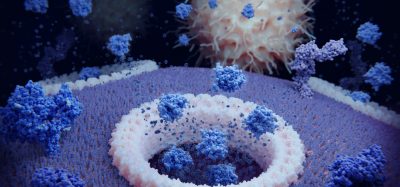Autoimmune breakthrough: Egr-1 regulates treg cells in diseases like MS
Posted: 24 July 2025 | Drug Target Review | No comments yet
Scientists have found a key mechanism driving immune regulation in autoimmune diseases like MS and IBD – which could lead to new targeted treatments.


Autoimmune diseases such as multiple sclerosis (MS), inflammatory bowel disease (IBD) and rheumatoid arthritis (RA) affect millions of people around the world. These conditions occur when the immune system mistakenly attacks the body’s own healthy cells – leading to chronic inflammation and tissue damage. CD4+ T cells are crucial to these responses- both of which can either cause inflammation or help to stop it.
Among CD4+ T cells, a specialised subset known as regulatory T cells (Treg) plays a critical role in maintaining immune tolerance. Marked by the protein Foxp3, Treg cells suppress harmful immune reactions and help prevent autoimmune responses. However, in diseases like MS and IBD, the function of Treg cells is often compromised. This imbalance allows pro-inflammatory Th1 and Th17 cells to take over – making disease symptoms much worse.
Given their protective role, enhancing the development and activity of Treg cells has emerged as a promising therapeutic strategy. However, the molecular mechanisms that regulate these cells remain misunderstood.
Investigating Egr-1: a key regulator of treg activity
Looking for answers, a team of scientists led by Dr Xiaojun Wu and Dr Fei Huang from the Shanghai Key Laboratory of Compound Chinese Medicines and Dr Weidong Pan from the Department of Neurology at Shuguang Hospital, looked at the potential role of a gene called Early Growth Response Gene 1 (Egr-1) in Treg cell regulation.
Their study, published in Research, used an established animal model of MS called experimental autoimmune encephalomyelitis (EAE).
“We started by screening the genes that appeared different between mice with mild and severe EAE,” explains Dr Wu. “Among the top identified genes in CD4+ T cells, Egr-1 stood out as significantly downregulated in severe disease.”
Egr-1 deficiency worsens disease
To understand Egr-1’s role, the researchers used genetically engineered mice lacking Egr-1 specifically in CD4+ T cells. These mice were induced with EAE and monitored for disease progression.
“The mice lacking Egr-1 showed worse disease, fewer Treg cells and more inflammatory TH17 and TH1 cells,” explained Dr Huang.
The team also analysed immune cells from the spleen, lymph nodes and central nervous system, confirming the imbalance caused by the absence of Egr-1.
From mice to humans: confirming the mechanism
To see if similar patterns existed in humans, the team examined CD4+ T cells from MS patients and healthy donors. The results showed that both Egr-1 and Foxp3 levels were significantly reduced in patient samples.
To find the molecular relationship between Egr-1 and Foxp3, the team performed chromatin immunoprecipitation, which revealed that Egr-1 directly binds to the Foxp3 promoter. This combination was further reinforced through luciferase reporter assays – which confirmed that Egr-1 binding increases Foxp3 gene activity.
A new pathway to boost Treg cells
Dr Pan elaborated on their breakthrough finding: “We identified a unique mechanism of Egr-1. First, TGF-β activates the Raf/Mek/Erk cascade, which activates Egr-1. Egr-1 then directly binds to the Foxp3 promoter to enhance its expression, bypassing the classical Smad3-dependent pathway.”
This discovery provides a new understanding of how Treg cell development can be stimulated – offering potential new targets for immune therapies.
Calycosin: a natural boost for Egr-1
To explore therapeutic potential, the researchers investigated calycosin – a natural compound known to activate Egr-1. Treatment with calycosin restored Treg cell function and improved clinical outcomes in mice with EAE – but only in those with functional Egr-1.
This outcome suggests that drugs or compounds enhancing Egr-1 activity could be tailored as targeted therapies for autoimmune diseases, provided that the Egr-1 pathway remains intact in patients.
A promising therapeutic future
The study by Dr Wu, Dr Huang and Dr Pan presents strong evidence for the role of Egr-1 as a central molecular switch in immune regulation. By promoting Foxp3 expression and enhancing Treg cell function, Egr-1 may become a promising target in the treatment of autoimmune disorders.
Overall, this research gives us a significant insight into our understanding of immune balance and could eventually lead to the development of new therapies – potentially transforming the lives of patients with autoimmune diseases across the world.
Related topics
Analysis, Animal Models, Assays, Autoimmune disease, Drug Discovery, Immunology, Molecular Biology, T cells, Therapeutics, Translational Science
Related conditions
Inflammatory bowel disease (IBD), Multiple Sclerosis (MS), rheumatoid arthritis (RA)








